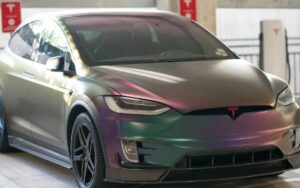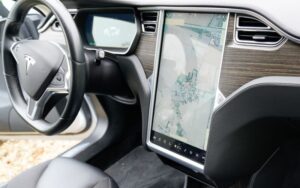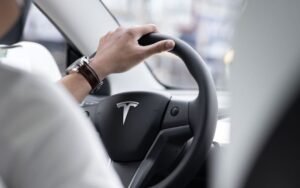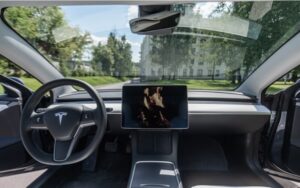Tesla Schedule Service to Replace Low Voltage Battery!
Last updated on April 18th, 2023 at 11:17 pm
Tesla cars use two batteries, a battery pack and a 12v battery, also known as a low-voltage battery.
These batteries are essential for your Tesla to function correctly. If the battery pack gets low, you need to charge it to use it.
However, if it’s the 12v battery that is low, you have a much bigger problem than that.
You then see a scheduled service notification saying you should replace the 12v low-voltage battery, and you wonder what it means.
When you get this notification to replace a low voltage battery, your 12v battery is low. You have a few weeks to replace it, so you should schedule a service replacement. Failure to schedule a service replacement and the battery fails, you will be unable to use your Tesla at all. However, fixing this issue is a simple thing.
In this article, I’ll explain the need for a scheduled service to replace your low-voltage battery and state its cost.
By the end of this article, you’ll understand all scheduled service notifications to replace your low-voltage battery.
Why Does a Tesla Say “Schedule Service to Replace Low Voltage Battery”?
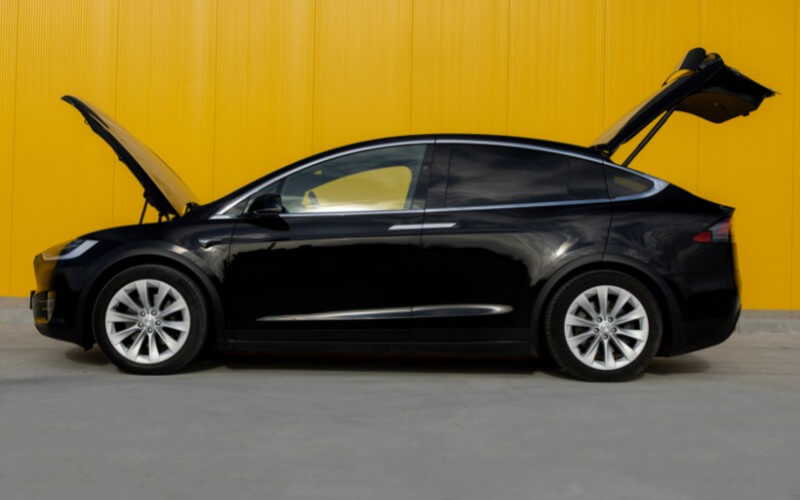
If your Tesla says you should schedule a service replacement for a low-voltage battery, it means you should replace the 12v battery in your Tesla.
It isn’t a message that you should ignore, as ignoring this message is fatal for your car.
Instead, this message makes you know that the battery is near the end of its life expectancy.
However, seeing this notification does not mean you can’t use your Tesla; it only needs a replacement.
That’s because you will be unable to make use of your Tesla if it suddenly stops because of it.
If you fail to replace this battery in the next few weeks, the 12v battery will stop working, and so will your Tesla.
Simply put, you cannot do the things you do with your Tesla, such as open the door, power the lights, or open the window.
Just know that as soon as you get this notification, you should schedule the replacement, or you’ll need help doing essential things.
For example, because you have a low-voltage battery, you might be unable to update your system software.
If you still need some updates in your vehicle, it might have different functionalities than vehicles of the same model.
You can quickly fix this problem or contact the Tesla service center for a replacement. However, for some models, you must take it to the Service center.
How Often Do You Have to Replace Tesla Battery?
How often you replace your Tesla battery depends on the battery you’re replacing. Remember that Tesla uses two batteries in them.
The battery pack is there to power the Tesla, and the 12v battery is there to power the smaller motor and functions in the vehicle.
If you’re replacing the 12v battery in your Tesla, you should replace it every three years.
Now you don’t have to worry about when to replace it as Tesla notifies you to do that soon.
Typically, you replace them in 3 years. However, it is different for the battery pack as this lasts longer than the 12v battery.
You might have to replace your Tesla battery pack once or twice throughout your Tesla’s lifespan.
That’s because the battery has reduced to less than 70% during that time. Besides, your Tesla can last for about 22-37 years.
However, you can’t expect your battery to last that long without issues or failing, so you might have to replace it.
However, it is rare to see someone who will use a car for so long without changing it.
The chances of replacing your Tesla battery during its warranty period are slight.
According to Tesla, the Model X and S can still retain 90% of their battery after 200,000 miles.
However, if, for any reason, your Tesla battery is below 70% and is within its warranty period, Tesla will change the battery at no cost.
However, it should be at most 100,000 miles or more, depending on your model. But, of course, you will have to pay to replace it if it exceeds the mileage.
For your Tesla to reach 200,000 miles, it will take about 15 years of driving.
You drive about 14,000 miles in a year, so in 15 years, you might not have to change your Tesla battery.
Elon Musk tweeted that your Tesla batteries last between 300,000 to 500,000 miles. So before you can drive your Tesla to cover that, mileage will take a long time.
You may not need to replace your Tesla battery when you use it. That is because the average American used a car for about ten years before changing it.
The table below shows different Tesla models with how long their batteries can last
| Models | Battery Duration |
|---|---|
| Model S | 450,000 miles |
| Model X | 450,000 miles |
| Model 3 | 300,000 – 500,000 miles |
| Model Y | 300,000 – 500,000 miles |
The battery duration in the table doesn’t mean you will not change your battery during the specified mileage.
It means if all works according to plan, and you ride and maintain your Tesla very well, you should have no problem with your battery.
However, we cannot guarantee that everything will go right; if it doesn’t, it will only be once or twice that you’ll replace the battery.
How Much Does It Cost to Replace a Low-voltage Battery on a Tesla?
It costs about $0 – $300 to replace your Tesla low-voltage battery at a Tesla service center, depending on the model and warranty.
It can also be low if you decide to replace it yourself; you only need to get the 12v battery and do the replacement yourself.
If your Tesla is under warranty, you won’t spend a dime replacing your low-voltage battery.
However, taking your Tesla to a third party for repair might affect your warranty.
When you want to replace your low-voltage battery, schedule an appointment with the Tesla service center to book an appointment.
That way, you’re sure you’re getting the best service and everything is good.
In addition, you can consider replacing your 12v battery with a third-party repair shop if you are not under warranty.
If you have the 12v battery and want to avoid paying the extra labor costs or have experience with vehicles, you can replace it yourself.
Follow these steps to replace your Tesla low-voltage battery yourself;
- Power off your vehicle and open the doors and windows.
- Disconnect the large battery pack to avoid electrocution. Next, open the back seats and remove the black plastic cover. Then, remove the black cord with a silver attachment.
- Open your vehicle hood and remove the black cover nearest the windshield.
- Remove the air vent at the passenger’s side.
- Remove the bolt that connects to your battery bracket.
- Disconnect the negative terminal, then the positive terminal to avoid sparks.
- Take out the old low-voltage battery.
- Place your new battery in the place of the old one.
- Attach the brackets.
- Attach the positive terminal first and then the negative terminal.
- Reinstall the bolts you removed earlier on the driver and passenger seats.
- Reinsert the plastic clever and air vents.
- Reconnect the large battery pack
You are good to go with your new low-voltage battery, and your car should work as it should.
However, if you can’t do it well, schedule an appointment with a Tesla service center or a third-party repair shop.
Can You Drive a Tesla with a Low Voltage Battery?
Yes, you can still drive your Tesla with a low-voltage battery. The notification you get to replace it when you need to change it is just a warning to you.
It isn’t that your car won’t start. Although you need the large battery pack in your Tesla to power your vehicle, the 12v or low-voltage battery is to power the auxiliary electronics.
They work hand-in-hand with each other. For example, if, after 30 days, you still need to fix your low-voltage battery, you will be unable to open the door, not to talk of driving your car.
It would be best if you replaced this battery when it prompts you to replace it because you don’t want to be driving it when it dies.
If that happens, you might become stuck in your car as you won’t be able to do anything. You will need to call a tow service to move your car, or they’ll jumpstart it.
So, it’s best to schedule an appointment to replace this battery as soon as you get the prompt.

Hey, I’m Michael Davis, a 35-year-old with a degree and a love for cars and tech. Since I was a kid, cars have been my thing—so much that I even thought they ran on magic beans! Fast forward, and I’ve built Vehicle Army, your one-stop-shop for easy-to-understand car facts.



